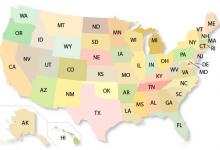The Pain of Funerals and Suicides Save
Recently, I went to one of my patient’s funeral. It was sad. Patient funerals are always sad for me. Fortunately, there aren’t many. I try to go to my patients’ funerals because I care and as a sign of respect. Funerals also keep me humble. Could I have done more?
This funeral was particularly heartbreaking. My patient was a 58-year-old woman who had had severe SLE since age 17. Prior to coming to the University of Colorado she had been treated with multiple therapies including high dose prednisone. The prednisone had caused avascular necrosis (AVN) of multiple joints.
The joint pain from the AVN resulted in her becoming narcotic dependent. She transferred her care to the University over ten years ago when her insurance changed to Medicare and Medicaid. I cared for her during the past decade putting her on mycophenolate mofetil which controlled her lupus and allowed tapering of prednisone. She still needed narcotics because all her affected joints could not be replaced. Physical therapy, antidepressants, and gabapentin helped a little but she still needed narcotics. She did not abuse them. She had a pain contract. Urine drug testing showed compliance as did the state prescription monitoring program database. She came for monthly visits to get refills from the same provider. She only took the prescribed amount. But she needed long-acting and short-acting narcotics daily. Attempts to taper narcotics in the past resulted in more pain which made her much less functional.
Two months before her death she changed to an insurance with cheaper copayments. The insurance change required her to change her primary care physician (PCP) and her follow-up at the University was restricted. She developed pneumonia and was hospitalized at a community hospital. She saw her new PCP for the first time following that hospitalization. The new CDC Opioid Guidelines had recently been published. Her new PCP said her pneumonia occurred because she was on too many narcotics and needed to come off of them. He would not write for her usual month’s supply.
She filled the prescription for the lesser amount and then took all of the narcotics at once. It was not by mistake. She died rather than endure more pain.
In the United States in 2015, there were 20,101 overdose deaths related to prescription pain relievers. It is unknown how many of these were unintentional and/or related to adverse interactions with other medications as opposed to how many were intentional (i.e. suicide) or related to illegal drug diversion. Also complicating this statistic is the inability to identify deaths due to medically prescribed fentanyl as opposed to that due to illicitly obtained fentanyl which is more deadly.

Regardless of these limitations there is a close relationship between the increase in number of prescriptions for opioids and the increase in number of opioid-related deaths, opioid-related emergency room visits, number of people dependent on opioids, and number of individuals who switch to heroin because it is cheaper and easier to obtain.
How did we get into this mess? In the early 1990s, pain experts were telling physicians that we were undertreating pain. In 1995, the American Pain Society designated managing pain as “The Fifth Vital Sign”. Not surprisingly, the pharmaceutical companies that produced pain medications helped “to get the word out.” Opioid prescriptions have increased annually since then.
By 2012, there were 259 million prescriptions written for opioids, which is enough to give every adult in the United States their own bottle of pills. What was lost in translation was the concept that pain should be treated to the level that makes the patient functional. Increasing the opioid dose to decrease the pain scale to zero was never the recommendation and clearly dangerous.
Now in 2016, the pendulum has swung back. Federal and State entities are now publishing opioid prescribing guidelines for chronic pain. Some are suggesting that doctors who prescribe opioids should take a training course and pass a test.
Really? I would predict many if not most physicians would turn in their DEA license rather than take a required test.
Politicians and regulators should realize that because of the increased scrutiny most physicians would be more than happy to not write opioid prescriptions. The problem is there are many patients who have legitimate pain that requires opioid analgesia because physical therapy modalities and other “safer” medications (NSAIDs, neuroleptics, antidepressants, etc.) haven’t controlled pain to a degree that makes them functional.
These patients need physicians who will prescribe them responsibly and safely. These patients do not need health care providers to stigmatize them and/or threaten to stop all their opioids. Otherwise we will have more funerals due to suicides and that would be very sad.










If you are a health practitioner, you may Login/Register to comment.
Due to the nature of these comment forums, only health practitioners are allowed to comment at this time.